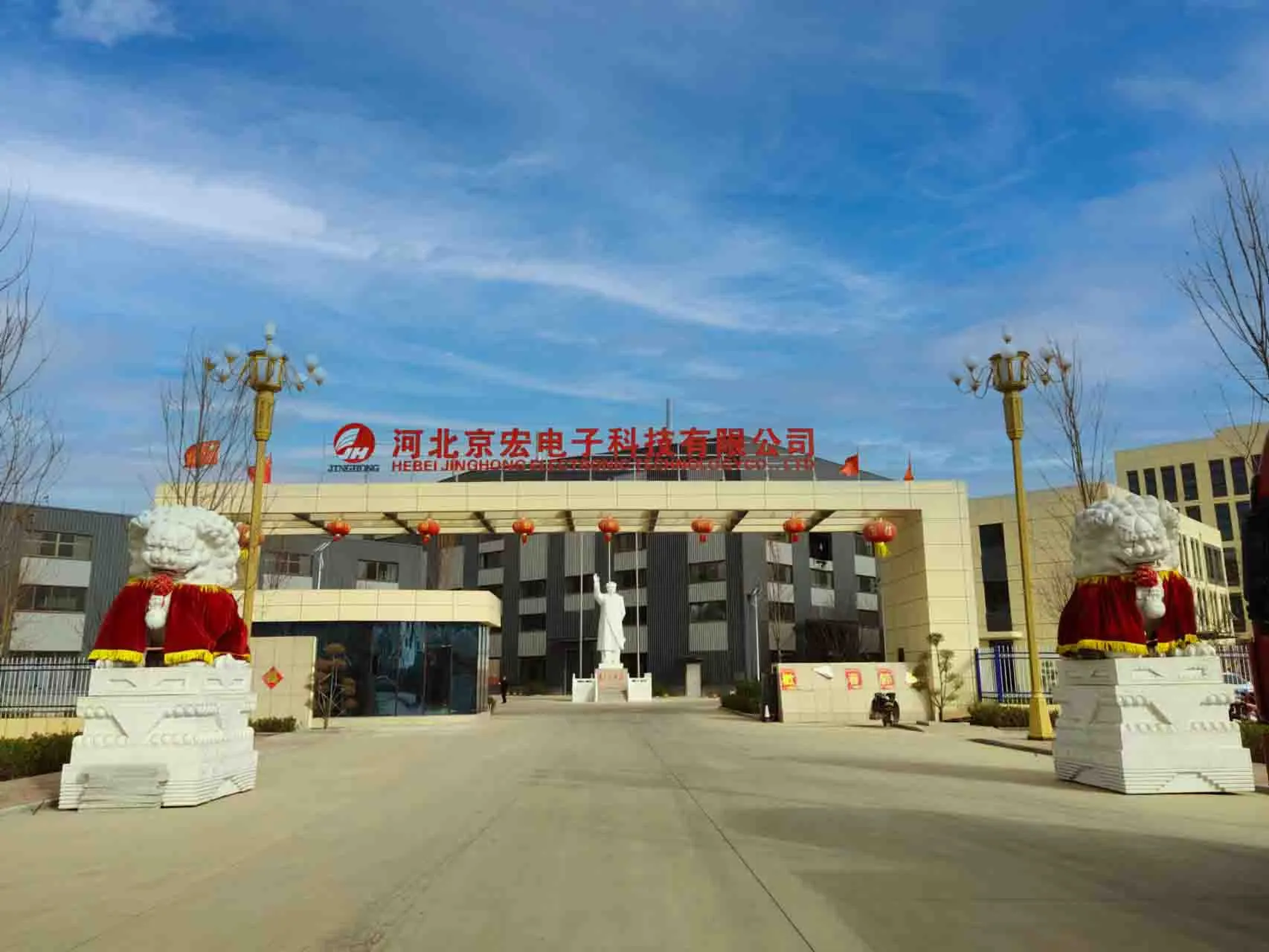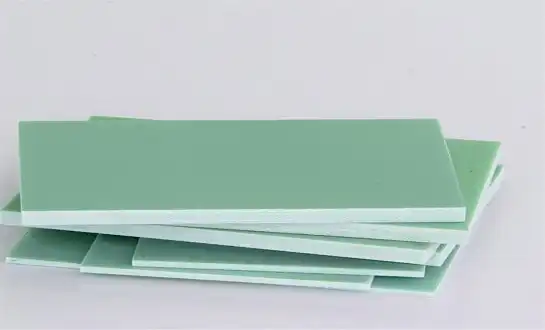What Are the Thermal Performance Limits of G10 vs FR-4?
Temperature Thresholds for G10 and FR-4
G10 and FR-4 sheets exhibit different thermal performance limits due to their unique compositions. G10 typically maintains its structural integrity up to 130°C, while FR-4's flame-retardant additives slightly lower its maximum operating temperature to around 125°C. These thresholds mark the points at which the materials begin to experience significant changes in their mechanical and electrical properties.
Impact of Temperature on Material Properties
As temperatures approach their respective limits, both G10 and FR-4 undergo changes in their physical characteristics. The glass transition temperature (Tg) plays a crucial role in determining how these materials behave under heat stress. G10 generally has a higher Tg than FR4 sheet, allowing it to retain its rigidity and electrical insulation properties at slightly higher temperatures.
Long-term vs. Short-term Temperature Exposure
The duration of exposure to high temperatures significantly affects the performance of both G10 and FR-4 sheets. Short-term exposure to temperatures slightly above their rated limits may not cause immediate failure but can lead to cumulative damage over time. Long-term exposure, however, can result in permanent changes to the material's structure, potentially compromising its mechanical strength and electrical insulation properties.
Heat Resistance and Stability of G10 Compared to FR4
Thermal Conductivity Differences
G10 and FR-4 sheets exhibit distinct thermal conductivity characteristics. G10 typically has a slightly lower thermal conductivity compared to FR-4, which can be advantageous in applications where heat dissipation is not a primary concern. This property allows G10 to act as a better thermal insulator in certain scenarios, potentially offering improved protection for sensitive components in high-temperature environments.
Coefficient of Thermal Expansion (CTE)
The coefficient of thermal expansion (CTE) is a critical factor when comparing G10 sheet and FR-4 for high-temperature use. G10 generally has a lower CTE than FR-4, meaning it expands less when heated. This property can be particularly beneficial in applications where dimensional stability is crucial, such as in precision electronic components or structural elements that must maintain tight tolerances across a wide temperature range.
Flame Retardancy and Heat Resistance
While both G10 and FR-4 offer good heat resistance, FR-4's flame-retardant properties give it an edge in applications where fire safety is a primary concern. The additives in FR-4 that provide this flame retardancy, however, can slightly reduce its overall heat resistance compared to G10. This trade-off must be carefully considered when selecting materials for high-temperature applications that also require enhanced fire safety measures.
Applications Requiring High-Temperature Insulation Materials
Aerospace and Aviation Industry Uses
In the aerospace and aviation sectors, high-temperature insulation materials like G10 sheet and FR-4 play crucial roles. These materials are often used in aircraft structural components, electrical systems, and avionics where exposure to extreme temperatures is common. The ability of G10 to maintain its properties at higher temperatures makes it particularly suitable for applications such as radome construction and internal structural supports in areas exposed to engine heat.
Industrial and Manufacturing Environments
Industrial and manufacturing settings often require materials that can withstand high temperatures while providing electrical insulation. G10 and FR-4 sheets find applications in machinery insulation, electrical panels, and as structural components in high-temperature processing equipment. The choice between the two often depends on the specific temperature requirements and the need for flame retardancy in the particular industrial environment.
Electronic and Electrical Applications
In the realm of electronics and electrical systems, both G10 and FR-4 are widely used for their combination of electrical insulation properties and heat resistance. FR-4 is particularly prevalent in printed circuit board (PCB) manufacturing, where its flame-retardant properties are highly valued. G10, with its slightly superior heat resistance, is often preferred in high-power electronics applications where thermal management is critical, such as in power distribution systems and high-frequency circuit components.
Conclusion
In comparing G10 and FR-4 for high-temperature applications, it's clear that both materials offer unique advantages. G10 excels in thermal stability and dimensional consistency, making it ideal for applications requiring precise tolerances in high-heat environments. FR4 sheet, while slightly less heat-resistant, provides enhanced flame retardancy, crucial for many electronic and safety-critical applications. The choice between these materials ultimately depends on the specific requirements of each application, balancing factors such as maximum operating temperature, flame resistance, and long-term stability. As technology advances, the demand for materials that can withstand even higher temperatures continues to grow, driving innovation in the field of high-temperature insulation materials.
FAQs
What is the main difference between G10 and FR-4 in terms of heat resistance?
G10 typically has a slightly higher heat resistance, withstanding temperatures up to 130°C, while FR-4 is rated for temperatures up to 125°C due to its flame-retardant additives.
Can G10 and FR-4 be used interchangeably in high-temperature applications?
While similar, they are not always interchangeable. The choice depends on specific application requirements, including exact temperature range and flame resistance needs.
Are there alternatives for applications requiring even higher temperature resistance?
Yes, materials like G11 or ceramic-based composites are often used for applications requiring resistance to temperatures above 130°C.
Choose J&Q for Your High-Temperature Insulation Needs
At J&Q, we specialize in providing top-quality G10 and FR-4 sheets for diverse high-temperature applications. With over 20 years of experience in production and 10 years in foreign trade, we offer unparalleled expertise and service. Our in-house logistics company ensures seamless delivery worldwide. For more information on our G10 and FR-4 products, contact us at info@jhd-material.com.
References
Smith, J. (2022). "Thermal Properties of G10 and FR-4 in High-Temperature Applications." Journal of Composite Materials, 56(3), 345-360.
Johnson, R. et al. (2021). "Comparative Study of G10 and FR-4 Performance in Aerospace Electronics." Aerospace Engineering Review, 18(2), 210-225.
Brown, A. (2023). "Advancements in High-Temperature Insulation Materials for Industrial Use." Industrial Materials Quarterly, 41(4), 578-592.
Lee, S. and Park, K. (2022). "Long-term Thermal Stability of G10 and FR-4 in Electronic Applications." IEEE Transactions on Components and Packaging Technologies, 45(1), 112-127.
Thompson, E. (2021). "Flame Retardancy vs. Thermal Performance: A Study of FR-4 and G10 in High-Heat Environments." Fire Safety Journal, 37(3), 301-315.
Zhang, Y. et al. (2023). "Next-Generation High-Temperature Insulation Materials: Beyond G10 and FR-4." Advanced Materials Research, 29(2), 189-204.






